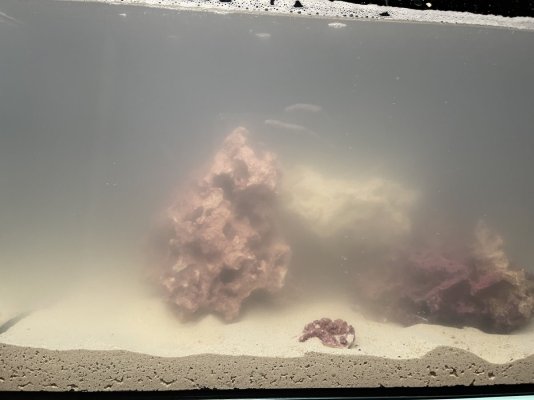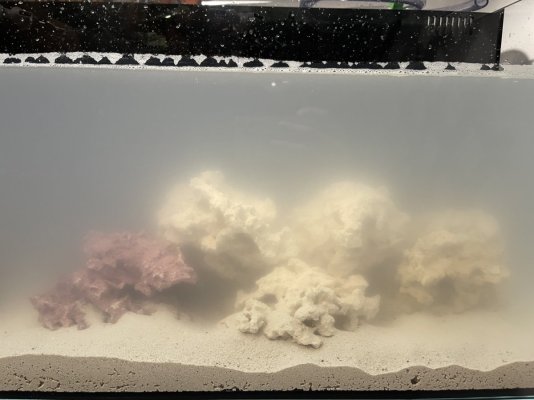Hi. After a long research I am finally adding stuff to my tank. Went to my local LFS and got some rocks. Stacked together to make a couple caves front and back. The thing is I kinda took my time to stacking them and it probably took me 6 hours before I actually add water, then another two hours for a power head in the tank. Are the live rock still “live” at this point or there will be die off? Not sure what that is exactly but I think it’s a thing.
I also can’t add heater as I don’t have enough saltwater to completely fill the tank and the heater needs to be fully submerged. Will that cause any issue? I’m filling the whole thing tomorrow. LFS also told me to run the power head but won’t it make the sand settle slower? Or it doesn’t matter because I’m pouring another 30g of water in there tomorrow.
And is the sand bed too thick? I have a 65.4g aio and I only got 40lbs of live fiji pink and it still feel quite thick. I tried to shove some around the rock too.
Thanks for any help in advance.


I also can’t add heater as I don’t have enough saltwater to completely fill the tank and the heater needs to be fully submerged. Will that cause any issue? I’m filling the whole thing tomorrow. LFS also told me to run the power head but won’t it make the sand settle slower? Or it doesn’t matter because I’m pouring another 30g of water in there tomorrow.
And is the sand bed too thick? I have a 65.4g aio and I only got 40lbs of live fiji pink and it still feel quite thick. I tried to shove some around the rock too.
Thanks for any help in advance.




















